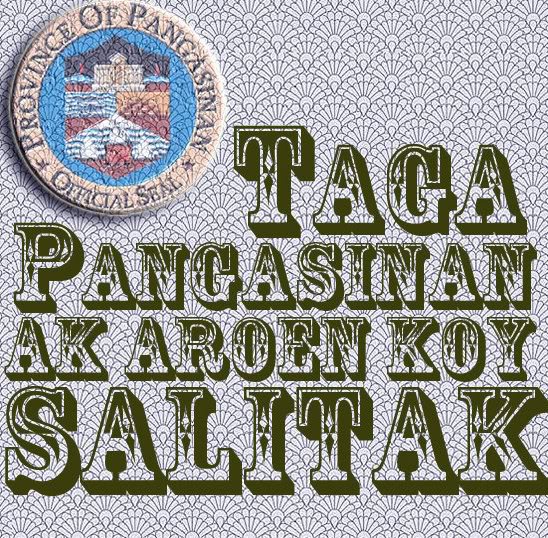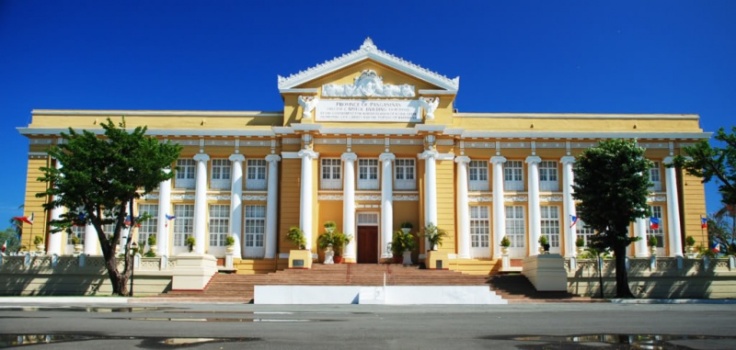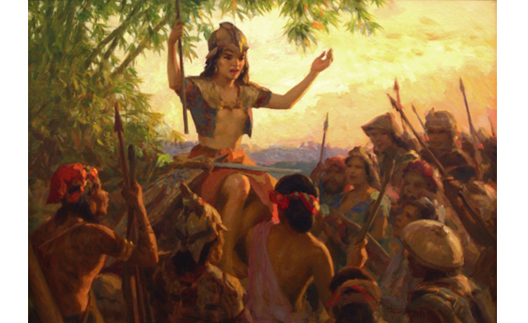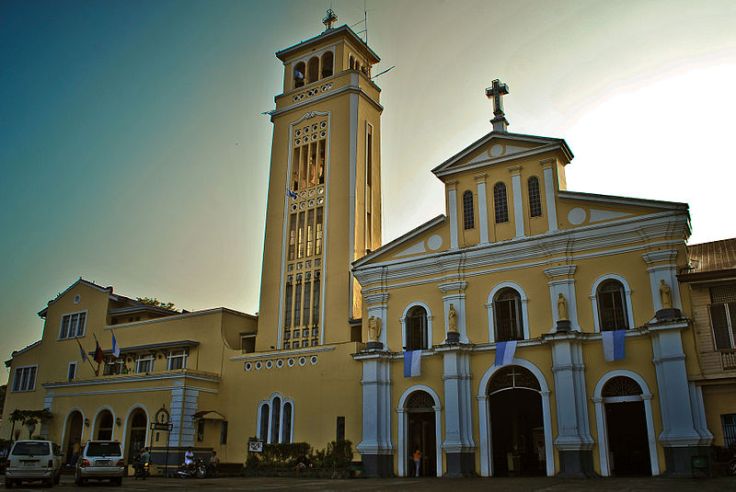Language

Pangasinenses use at least three different dialects to communicate. These are Tagalog, Pangasinan, and Ilokano. In the northern municipalities of Pangasinan, both Ilokano and Pangasinan are generally used. On the other hand municipalities situated in the South and the East commonly speaks more of Ilocano than Pangasinan. Western municipalities tend to use Pangasinan rather than any other dialect. By age, the elder population are more comfortable in using Pangasinan and Ilokano more than the younger ones that prefer Tagalog as their main way of communicating. Schools, hospitals, government agencies, and commercial establishments favour using both Tagalog and Pangasinan in going about their daily transactions. Although Pangasinan is the official dialect of the Pangasinenses, it is said that it is a dying dialect where less and less people are using it especially the younger population. One reason can be attributed on how students are taught in school where the use of English and Filipino are not just encouraged but firmly imposed. Furthermore, the younger generation also has this culture of discriminating and looking down on people who use the local dialects for they denote that a person is “from the barrio” or he/she belongs to the lower class of society. With this stigma, younger people especially the youth are embarrassed in using their own dialects and just use Tagalog for them to be accepted in the circles they belong in. It is actually very sad because Pangasinan is part of our identity as Pangasinenses. Without it, we are basically destroying a part of who we are as people. If we can just address this and have more pride in using our own dialect, we can prevent the fast deterioration of this identity.
Laws and Politics

Pangasinan’s government has always been very active ever since. Because of its past and present administration, Pangasinan’s wellness was sustained all over the years. The province has already accomplished many projects which helped them gain awards for the quality service it provides.
Vice President Leni Robredo commended the former governor of Pangasinan, Amado Espino Jr., for his transformative leadership by receiving the Seal of Good Local Governance Award (former Seal of Good Housekeeping) last 2015.
The former governor has accomplished various projects in healthcare services, employment rates, human resource management, tourism, and agricultural and livelihood programs which gave Pangasinan a new face and became an outstanding and one of the top provinces in the country.
Pangasinan was the first province to receive International Organization for Standardization (ISO) 9001-2008 Certification for excellent hospital services. The Provincial Health Office for public health also garnered ISO Certificate that gives administrative and management support services like Pangasinan Provincial Hospital and General Services Office, Engineering, Accounting, Planning and Development, Human Resource Management and Development Office (HRMDO), and MISO.
Fourteen (14) stations of dialysis centers and the implementation of Point-of-Care also asserted in the speech, helping indigent families have PhilHealth Insurance and are free to hospital bills and medications in times of healthcare needs. The 14 provincial hospitals even compete to other private hospitals in the province in terms of its cleanliness and orderliness, facilities and equipment, which provide good service to the community.
Economics has also been watched throughout his term. In the eight and a half years, starting from July 2007 to December 2015, 11,964 laborers were given jobs by the Provincial Employment Services Office (PESO) inside and outside the country. “Bantay Baranggay, Tulungan Hanapbuhay”, PESO program, which fight illegal recruitment and human trafficking were also given emphasis together with the Pangasinan OFW (Overseas Filipino Workers) and Overseas Filipino Family Creative Cooperative for the vitality of the OFWs from Pangasinan.
Pangasinan’s tourist destinations’ and accommodations’ records show that almost 6.4 million tourists in 2015 visited Pangasinan and declared top three tourists spots: Virgin Mary’s Basilica, Capitol Complex, and Hundred Islands.
Provincial scholars also pumped up from 492 last 2007 to 7,037 last 2015. John Rodrigo Tamayo, from Mangaldan, who bags 2nd place in ECE (Electronics and Communication Engineering) Board Exam last October 2012, and Fern Adriel Velasco, from Lingayen, bags 8th place in CPA (Certified Public Accountant) Licensure Exam last October 2015, were proud scholars of the province.
Pangasinan bagged numerous awards for the outstanding performances the people and administration has displayed. Some of the awards are as follows: Ilocos’ Best Performing Local Government Unit (LGU) in Local Governance, Champion for LGU Best Practices, Seal of Good Local Governance (SGLG), Best Provincial PESO – 1st class province category and many more.
Technology and Material Culture

Due to the rapid modernization, Pangasinenses also strives to jump on the bandwagon. Yet still, living in a rural province actually helps to maintain the traditional living of Pangasinenses.
With the main livelihood of the people here which is farming, Pangasinense has a lot to offer when it comes to agriculture. Rice is the principal crop of the region while tobacco and sugarcane are planted on the mountainous areas of the province. Thick coconut groves, copra, fans, sweet coconut bars (bukayo), and other coconut delicacies are produced. While fish sauce (bagoong) remains prominent in the province so as fish products like boneless bangus. Pots and wooden furniture are also some of the province’s products.
Pangasinenses still also utilize kuliglig as their notable transportation in the rural areas. It is used to carry several people along with their harvested crops or materials to make their work better and easier. They still make use of carabaos as a partner in farming in some areas but some prefers tractors and other machineries to work with.
Houses in Pangasinan are mixed types. Several residences are built inspired by the Western countries with pure concrete and steel roofing. Some has the classic nipa hut and similar wood products. Others had both of the concepts by placing the concrete in the first level of the house and wooded materials in its succeeding floors.
Having an altar in every home also reflects the Pangasinenses as being God-fearing people. A lot of people are devoted in their respective saints by placing flowers, foods, and money as their offerings to them. Regular praying in front of it is also exercised accompanied with their rosaries while kneeling down or just simply sitting on a chair.
People in Pangasinan tend to dress accordingly with the mainstream standards. Because of the colonial mentalities Filipinos have, most of the Filipinos counting Pangasinenses strive to achieve that. Yet some still practice traditional clothing with reserved personality.
Pangasinan is still not fully urbanized. But it seems like the province doesn’t need to be a fully one to be successful for being a half urban and half rural province contributes a lot on its provincial growth and development.
Values and Attitudes

Living in the third largest province in the Philippines, Pangasinan people or Pangasinense are not set apart from the extraordinary values and attitudes of Filipinos.
Pangasinenses are also known with the same attitudes as Filipinos. They are also hospitable, family centered, religious, respectful and hardworking. Apart from this, they are also lovers of their values and heritage.
Pangasinenses love literature as it is shown in the well-known piece about the legend of Princess Urduja. Pangasinense are also lovers of arts and culture and it is manifested in many traditions, one of which is the practice is called “panagkamarerwa,” which is taken from the Pangasinan word “kamarerwa” or soul during all soul’s day. Pangasinenses also show their values through songs, an example of which is the “Malinak lay labi” that manifests the values of Pangasinense for courtship.
Pangasinenses are naturally religious, an important example of this is the belief in the miracles of the Marian image is the Virgin Dolorosa of Mangatarem who according to the townspeople have protected them from the vicissitudes of war. The sash of the Virgin is also borrowed from time to time by pregnant women who wear it on their last week of pregnancy to ensure safe delivery.
The Pangasinense are fans of celebrations also. Special occasions such as fiestas, weddings, baptisms and death anniversaries are some in which extravagance is needed to “save face”.
Values and attitudes have always come together since these mostly compose the personality of a Pangasinense.
Education
With the implementation of the mother tongue-based multilingual education in the public elementary schools in the Philippines, the education system of Pangasinan leveled up on its quality as the dying mother tongue of the province gets reborn in elementary school curriculum.
Pangasinense mother tongue or Pangasinan has a very close relationship with the Ibaloi language spoken in the neighboring province of Benguet and Baguio City. Pangasinan is classified under the Pangasinic group of languages.
Considering Pangasinan as the main language used in the area. The new order of Department of Education (DepEd) requires that the mother tongue be used as the primary language of instruction from pre-school to at least grade 3. Pangasinan is to be used to teach other languages, including English and Filipino, as well as science and math.
A mother tongue program aims to nurture and to remember the languages that contributes a lot to the ethnic origin of the provinces. As stated in the implementation of the order, DepEd will support very basic work like developing orthographies (spelling system) for local languages to use for educational materials.
The quality education of the province is also recognized as the schools of the province produce topnotchers in the different Licensure exams for teachers and other professions. The topnotcher in CPA examinations came from the Dagupan City last 2015.
Its universities are recognized as competent universities of the region making the advocacy to make Pangasinan Number one an effective campaign. Pangasinan might only be a province but it is a province of quality education and students.
Social Organization

Social organization has been defined as the formation of a stable structure of relations inside a group, which provides a basis for order and patterns relationships for new members. These are the bodies that make the community manageable and stable.
In order for a state to succeed, different bodies of the government is assigned for the wellness of the province. The same with the government bodies or agencies in different provinces, Pangasinan also have such.
Found in Lingayen, the heart of Pangasinan are the Department of Education (DepEd) which supervises on the education process and quality of teaching in the province, Department of Science and Technology (DOST) which is responsible for the coordination of science and technology-related projects in the Philippines and to formulate policies and projects in the fields of science and technology in support of national development, Department of Tourism (DOT) which promotes the unique industry of the province to the tourists, and Commission on Elections which is in charge for the election process and appointments of the officials.
In Dagupan, several government agencies are also found. These are the Department of Health (DOH), Department of Labor and Employment (DOLE), Department of Social Welfare and Development (DSWD), Department of Trade and Industry (DTI), Bureau of the Treasury, Bangko Sentral ng Pilipinas (BSP), Government Service Insurance System (GSIS), Social Security System (SSS), Bureau of the Treasury, and Government Service Insurance System (GSIS).
Some important organizations are found in Calasiao namely the National Statistics Office (NSO) and Department of Foreign Affairs (DFA).
In Urdaneta City, The Department of Energy (DOE) and Bureau of Internal Revenue (BIR) are situated. National Food Authority (NFA) is in Binalonan and the Technical Education and Skilals Development Authority (TESDA) is in Asingan.
Religion

Manaoag, a native Pangasinan term which literally means “to call” and one of the known towns in the province for its patroness, The Sacred Most Holy Rosary of Manaoag. The Minor Basilica of Our Lady of Manaoag draws a congesting flocks of visitors and devotee, everyday. The image of the Virgin Mary of Manaoag is believed to be a miraculous and said to be has the power to heal.
Before the emergence of Christianity brought by the Spaniards in the early 16000s, Pangasinenses then like the other indigenous communities in the Philippines believed in paganism and animism which they praised everything they see around them. According to research, the Dominican missionaries conquered the province by Christianity which they thrived. It is evident therefore that their religious influence still runs and observed until these very days.
Pangasinenses like the Roman Catholic Community worldwide observes November 1 every year as All Saint’s Day and All Soul’s on every November 2. These days are witnessed to give tribute to their loved ones by visiting the tomb and offers prayer with means of singing the names of the dead. Lighting candles at the altar of the house is also believed to be the replacement instead of visiting the cemetery.
A 142 quatrains, Pangasinan Christmas Carol which could be performed by both men and women in an estimated 90 minutes. The song is related to the story of the three wise men or the Magi. Moreover, the song is considered to be the longest Christmas carols among the other Christmas hymns in the Philippines
During the commemoration of the Holy Week however, the locals of Pangasinan particularly the parishes in the province observes the religious tradition services such as the procession of the so called, “Santo Bangkay”, a replica of the remains of Christ’s body during the good Friday and the “Pabasa” or the chanting of the life of Jesus which starts on the holy Wednesday and will end midnight of good Friday.
The feast of the Senior Divino Tesoro in the town of Calasiao is also celebrated from April 24 to May 2. Senior Divino Tesoro is also believed to be a miraculous image of the Christ Jesus in the cross.
Furthermore, during the season of lent, the Parish of Sto. Domingo Pangasinan in the city of San Carlos hosts the living rosary vigil along the main streets of the city.
Aesthetics

Pangasinan, a province located in the northwestern part of the Philippine islands has some many qualities that could offer not only to its locals but for tourists as well. The rich culture, arts and tradition are just some of the few attributes to consider to espouse and love the salt paradise of the archipelago.
The culture of Pangasinan has a diverse influence from the ethnic groups of Malayo-Polynesian, western Hispanic, Indian, and Chinese and with a bit effect of Americanism. Nonetheless, nowadays because of the undeniable influence of the western countries, the province is now modernized but the steadfast background of the blended influences still runs within the ardent hearts and veins of every Pangasinenses.
The province is composed of forty-eight municipalities, three of which are cities and one is independent city. The culture of Pangasinan is very much vibrant in Dagupan City, San Carlos City, and Municipalities of Manaoag, Lingayen and Calasiao with their city and town fiestas such as Bangus Festival, Mango and Bamboo Festival, Galicayo Festival, Bagoong Festival and Puto Festival, respectively which not only mirror the rich culture but it help promote the talents and products of the locals.
Moreover, Pangasinenses are somewhat tagged as business-minded individuals this might in fact under the hereditary influence of the Chinese. Hence, some of the traditional industries in the province still continue to succeed— The Buri hat making, mat weaving, wooden shoe manufacture, brick and pottery making and metalcraft.
Hence therefore, at the end of the everyday the influences of either hereditary, environmental, and ancestral will always flow inside and will reflect who we really are, today and tomorrow.
Sources:
Sotelo, Y. (2011, October 25). A dying tradition of remembering the dead. Retrieved May 9, 2017, from http://newsinfo.inquirer.net/82923/a-dying-tradition-of-remembering-the-dead
C. (2008, June 12). Pangasinense. Retrieved May 9, 2017, from http://pangasinense.blogspot.com/2008/06/pangasinense-who-is-he.html
About Pangasinan. (n.d.). Retrieved May 9, 2017, from http://pangasinan.gov.ph/the-province/about-pangasinan/
“History of Pangasinan”. Retrieved 9 May 2017.
Tan, M. (2009, July 21). Posts about Pangasinan use of mother tongue initiative on Multilingual Philippines. Retrieved May 9, 2017, from https://mlephil.wordpress.com/tag/pangasinan-use-of-mother-tongue-initiative/
List of Philippine Government Agencies. (n.d.). Retrieved May 9, 2017, from http://www.infinithink.org/2014/09/list-of-government-agencies.html
(n.d.). Retrieved May 9, 2017, from http://www.seasite.niu.edu/Tagalog/Tagalog_Default_files/Philippine_Culture/Regional%20Cultures/pangasinense/pangasinans.htm
http://www.lchr.org/a/31/5d/culture.html
Pangasinan people. (2017, May 12). Retrieved May 9, 2017, from https://en.m.wikipedia.org/wiki/Pangasinan_people
L. G. (2017, March 31). Pangasinan Beliefs. Retrieved May 9, 2017, from http://classroom.synonym.com/pangasinan-beliefs-7076.html
Images from:
http://www.skyscrapercity.com/showthread.php?t=1318581
http://www.zamboanga.com/z/index.php?title=Pangasinan_Province,_Philippines
https://makadto.com/tag/kuliglig/
http://ffemagazine.com/philippine-superhero-series-princess-urduja/
http://www.zamboanga.com/z/index.php?title=Pangasinan_News
http://www.educationpinoy.com/colegio-de-dagupan.html
http://pangasinan.gov.ph/the-province/official-seals/
https://pangasinantour.blogspot.com/2014/04/pangasinan-churches-to-visit-for-visita.html
http://pangasinan.gov.ph/2017/03/psinan-to-celebrate-437th-founding-anniversary-on-april-5/




Leave a comment